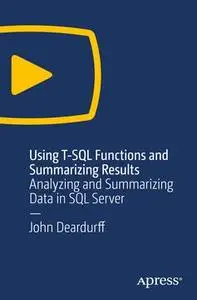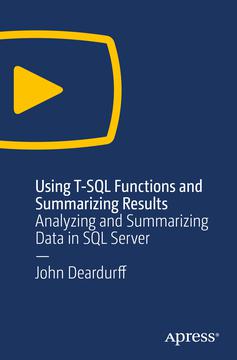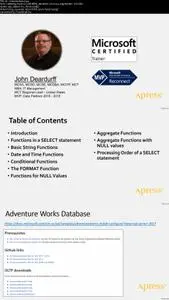Using T-SQL Functions and Summarizing Results
MP4 | Video: AVC 1280x720 | Audio: AAC 44KHz 2ch | Duration: 48M | 1.01 GB
Genre: eLearning | Language: English
MP4 | Video: AVC 1280x720 | Audio: AAC 44KHz 2ch | Duration: 48M | 1.01 GB
Genre: eLearning | Language: English
Enhance your SELECT statements by invoking a vast library of built-in features and capabilities that SQL Server exposes in the form of functions. This video shows how these functions enable data type conversions, null detections, date and number formatting, and much more. Also available are functions helping you to analyze data in the database itself. These functions enable you to summarize data to count occurrences, compute averages, and generate statistics.
The video begins with an introduction to basic functions to work with character data and NULL values. From there you’ll move on to functions dealing with conditional structures, NULL values, and formatting. You’ll also cover aggregate functions to average, count, and summarize data. Finally, this video discusses how to group result sets by a field using the GROUP BY clause, and how to filter those results after they have been grouped – using the HAVING clause.
Functions are the doorway to an ever-increasing number of powerful database engine features and capabilities. There is so much more that you can do in SQL other than simply SELECT data. Functions enable you to take full advantage of the power that’s available to you in Microsoft’s flagship database engine. This video is the second in a series and leaves you well positioned to step into the next video covering how to select data from multiple tables.
What You Will Learn
Sort data into groups and count the records in each group
Compute max, min, and mean values for records in a group
Format dates and numbers for display to end users
Filter to eliminate unwanted groupings from your result set
Search, concatenate, and manipulate strings
Detect NULL values and replace them with real values





